Starting a journey in graphic design can feel overwhelming when you’re not sure where to begin or which skills to focus on first. Books remain one of the most reliable ways to build a strong foundation because they offer structured learning paths that cover everything from color theory and typography to logo creation and layout principles.
The right design books can transform a complete beginner into a confident designer by breaking down complex concepts into manageable lessons. This guide walks you through seven essential titles that will help you understand core design fundamentals, develop your eye for composition, and navigate the practical realities of working in the field. Each book offers unique insights that complement your learning journey, whether you’re exploring grid systems, refining your approach to type, or learning how to maintain your creative integrity.
1) Graphic Design Fundamentals: An Introduction & Workbook for Beginners



This book by Kris Taft Miller offers a practical starting point if you’re new to graphic design. It covers core principles like color theory, typography, and layout composition in a straightforward manner.
The book includes a workbook section that lets you practice what you learn. You’ll find illustrations throughout that help explain design concepts visually, which makes the material easier to grasp when you’re just starting out.
What makes this resource useful is its concise approach. Instead of overwhelming you with technical details, it focuses on fundamental ideas that form the foundation of good design work.
The combination of instruction and exercises gives you a chance to apply concepts as you go. You can work through the material at your own pace, making it suitable whether you’re dabbling in design or planning to pursue it more seriously.
Published in June 2022, it’s part of a series on graphic design fundamentals. The book has received positive feedback from readers who appreciate its beginner-friendly format and practical exercises.
2) Thinking with Type by Ellen Lupton
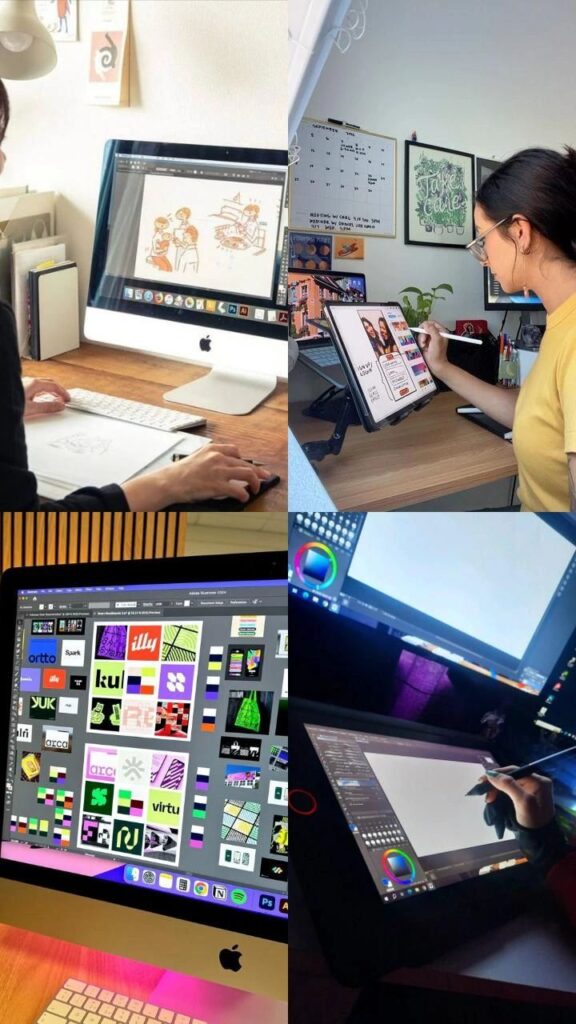
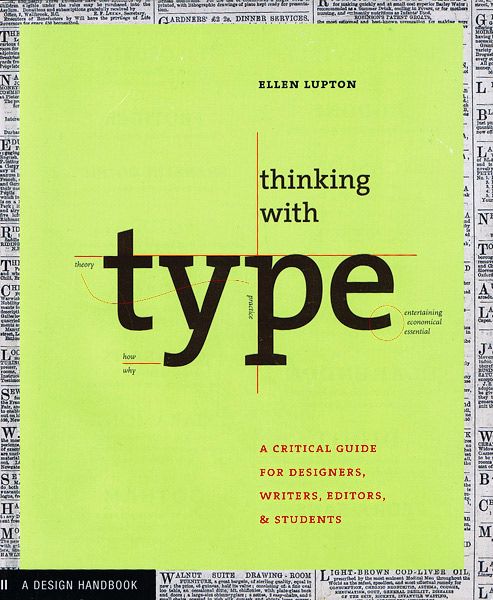

If you’re looking to master typography, this book is your go-to resource. Ellen Lupton, a respected design educator, has created a guide that breaks down typography into digestible concepts for beginners and experienced designers alike.
The book is organized into three main sections: letter, text, and grid. This structure helps you build your understanding progressively, starting with individual letterforms and expanding to complete page layouts.
What makes this book special is its accessibility. You don’t need prior design experience to grasp the concepts. Lupton explains typography principles in clear language, making complex ideas approachable for anyone working with words on page or screen.
The third edition has been expanded with additional voices, examples, and a wider range of typefaces. This means you’ll get exposure to contemporary typography trends alongside timeless fundamentals.
Whether you’re a designer, writer, editor, or student, you’ll find practical guidance you can apply immediately to your projects. The book covers both print and digital typography, making it relevant for modern design work across different media.
3) Color Theory: An essential guide to color-from basic principles to practical applications by Patti Mollica
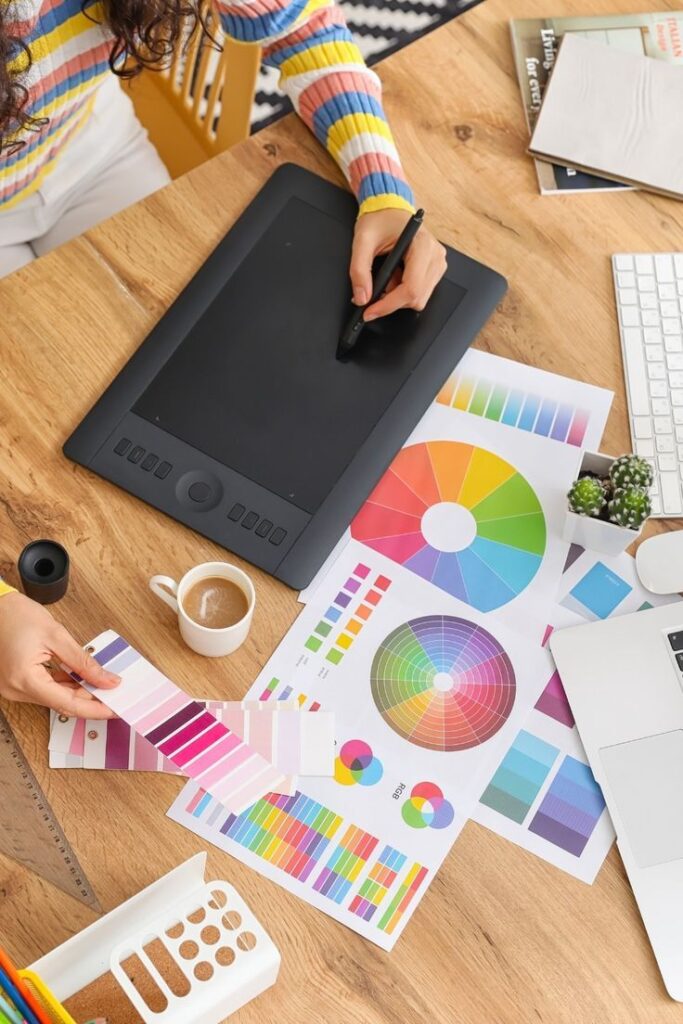
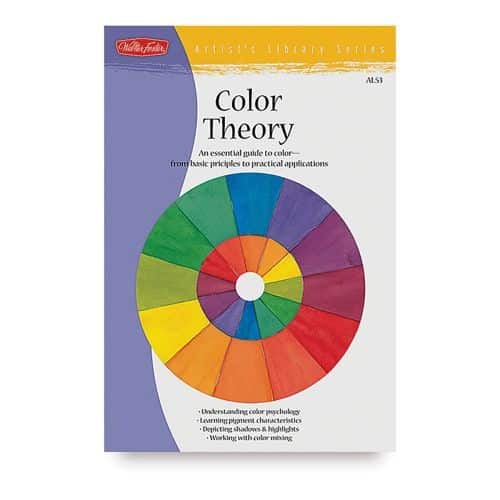
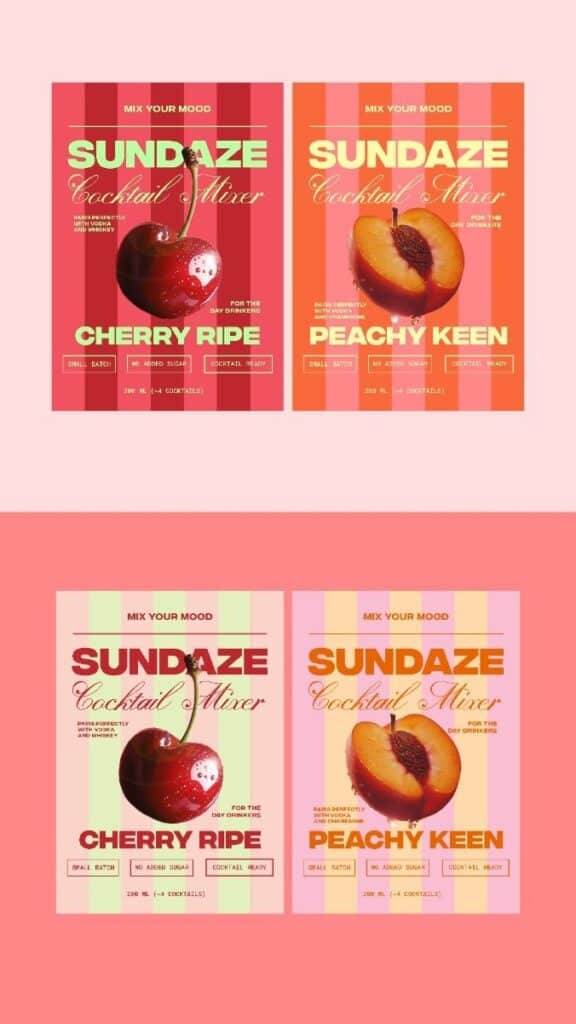
If you’re just starting your design journey, understanding color is fundamental to creating effective work. Patti Mollica’s guide makes this complex subject approachable and practical for beginners.
This compact book covers everything you need to know about working with color. You’ll learn about pigment characteristics, color mixing techniques, and how different colors interact with each other. The guide also explores color psychology, helping you understand how colors influence emotions and perceptions.
What makes this book particularly valuable is its hands-on approach. You’ll find step-by-step projects that let you apply what you’re learning immediately. While the content focuses on oil and acrylic painting, the color principles translate well across all design mediums.
The book presents color theory in a contemporary way that feels fresh rather than academic. You’ll discover practical tips for creating harmonious color schemes, working with shadows and highlights, and making confident color choices in your projects.
Whether you’re working digitally or with traditional media, the color fundamentals in this guide will serve you throughout your design career.
4) Logo Design Love by David Airey

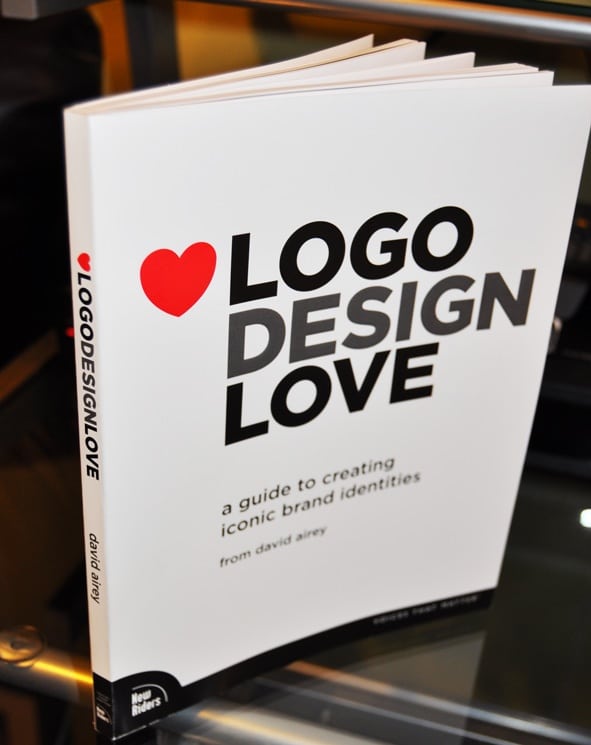

If you’re interested in brand identity design, David Airey’s “Logo Design Love” is an excellent starting point. The book draws from Airey’s popular blog of the same name and has been translated into 13 languages since its release.
You’ll find this guide takes you through the entire process of developing iconic brand identities from start to finish. Airey includes real client case studies from renowned designers, giving you practical insights into how professionals work.
The book’s layout is simple and modern, filled with inspiring logos and real-world anecdotes. You’ll learn best practices for creating brand identity systems that stand the test of time. Airey doesn’t just show you finished designs. He shares sketches, thought processes, and practical tips for working with clients.
The second edition expanded on the original with more case studies, logos, and insider stories. You’ll get both theory and practical information for landing projects and executing them successfully.
What makes this book particularly valuable for beginners is Airey’s clear, accessible writing style. He explains the nuances of logo design without overwhelming you with jargon or complex concepts.
5) The Elements of Graphic Design by Alex W. White

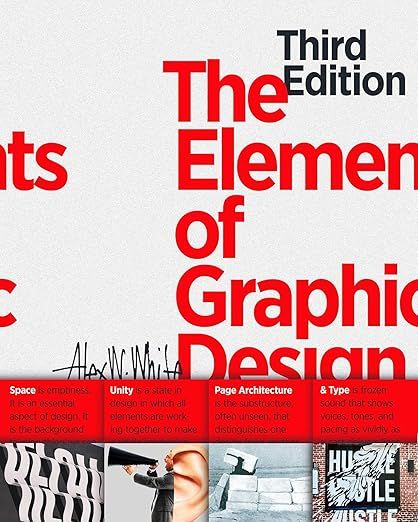

This book serves as a straightforward guide to understanding the core principles that make visual designs work. Alex W. White, a design veteran with over thirty-five years of experience, breaks down complex concepts into accessible lessons for beginners.
You’ll learn about White’s four key elements of graphic design. The book teaches you how to identify and emphasize dominant images, words, and concepts in your work. You’ll discover how to use scale, color, and position to direct viewers through your designs.
One valuable lesson focuses on white space. White explains how to treat it as an active design component rather than just empty background. This shift in perspective can transform your approach to layout.
The book covers typography, color theory, composition, and imagery. White emphasizes visual communication and how to organize design elements strategically. His teaching style combines analytical thinking with practical examples.
Whether you’re starting your design education or reviewing fundamentals, this book offers clear explanations. You’ll find it useful for understanding what makes designs both visually appealing and easy to read.
6) How to be a Graphic Designer without Losing Your Soul by Adrian Shaughnessy

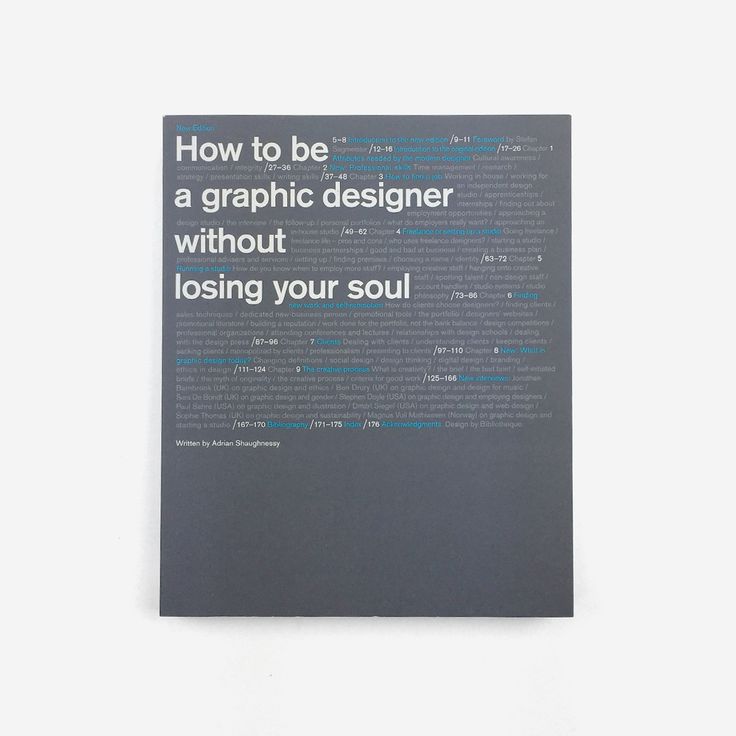
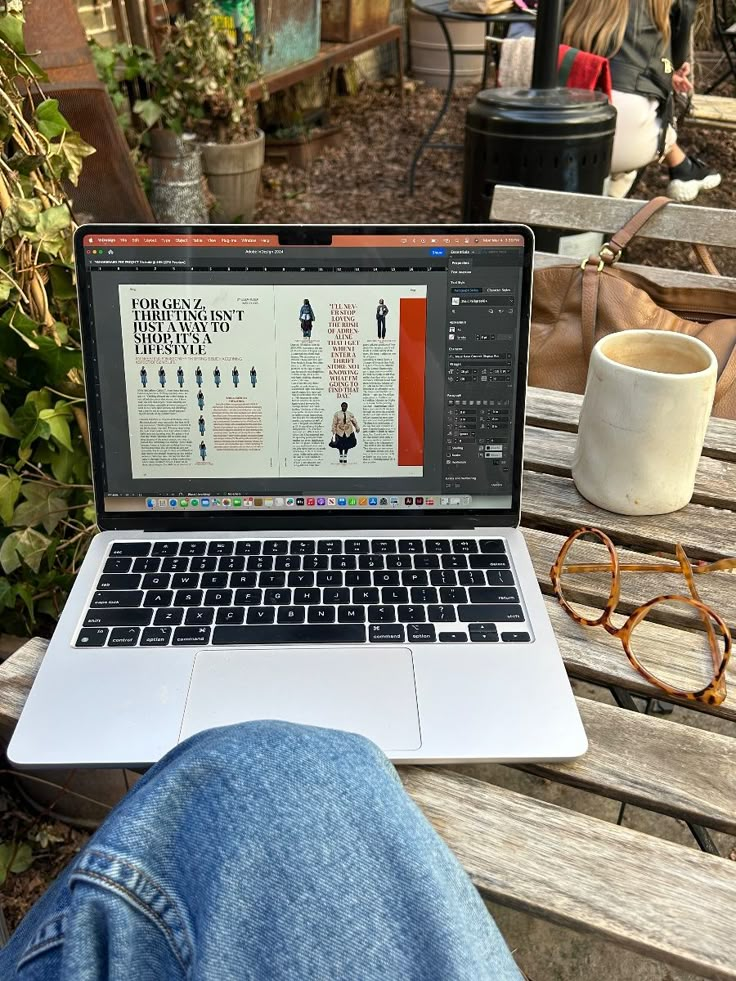
First published in 2005, this book has become a trusted resource for designers starting their careers. Adrian Shaughnessy, who co-founded the London design studio Intro, combines practical career advice with philosophical guidance.
The book addresses a challenge many young designers face: how to make a living while doing meaningful work. You’ll find insights on avoiding uninspiring projects and maintaining your creative integrity in commercial environments.
Shaughnessy draws from his 15 years as creative director to offer real-world perspectives. The expanded edition includes updated chapters on professional skills relevant to today’s design landscape.
What makes this book valuable is its balance between idealism and practicality. You get honest advice about navigating the business side of design without compromising your creative vision. It’s particularly useful if you’re wondering how to build a sustainable career while staying true to your design principles.
The accessible writing style makes complex career decisions easier to understand. Whether you’re just starting out or looking to redirect your design path, this book offers guidance on maintaining both professional success and personal satisfaction.
7) Making and Breaking the Grid by Timothy Samara
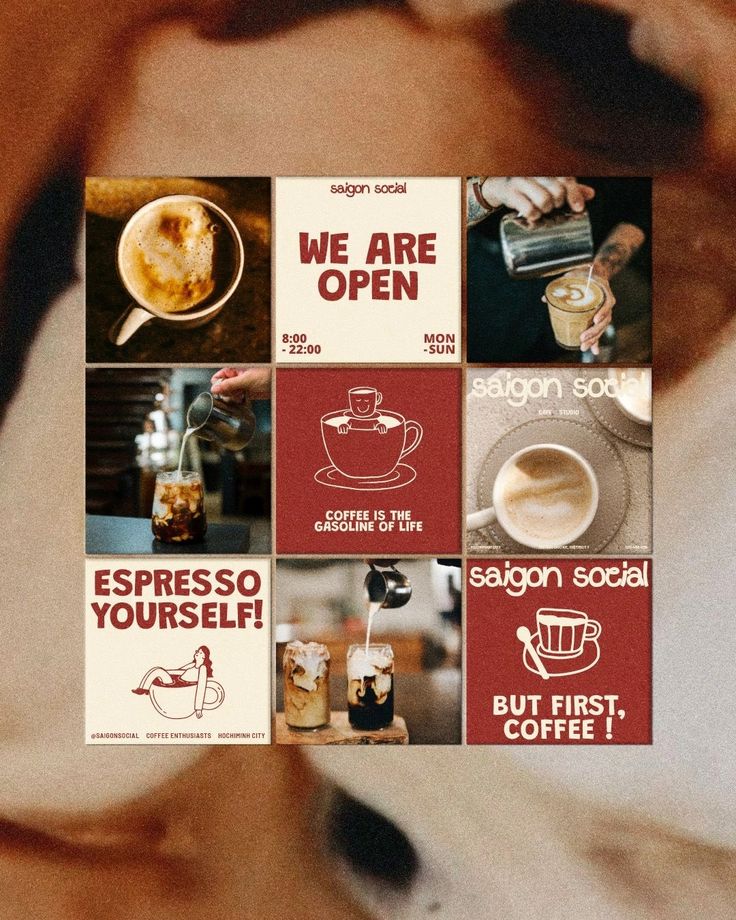
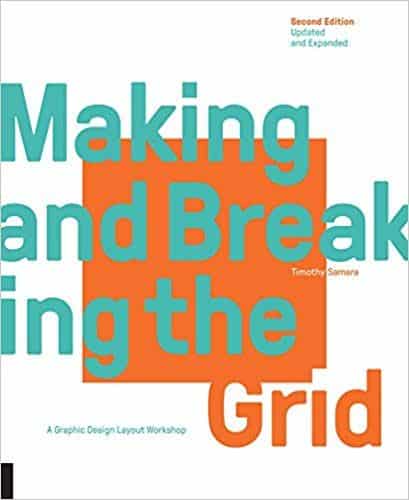

You’ll find this book invaluable if you want to master layout design fundamentals. Timothy Samara walks you through the essential principles of grid-based design, starting with the basics like column grids, compound grids, and modular grids.
The book is structured into two parts that guide your learning process. The first section teaches you how to build and use grids effectively in your design work. You’ll learn about composing typographic space, determining format, and creating systematic layouts.
The second part shows you when and how to break those grid rules you just learned. This approach helps you understand that breaking design rules works best when you first know why those rules exist. You’ll see real-world project examples that demonstrate both traditional grid usage and creative departures from it.
With over 150,000 copies sold, this classic text has helped countless designers develop their layout skills. The third edition includes updated examples and remains relevant for modern design work across different mediums. You’ll appreciate the practical case studies that show professional designers’ processes and decision-making.
Why Design Books Matter for Beginners
Design books provide structured learning paths and practical techniques that accelerate your growth as a designer. They offer curated knowledge from experienced professionals while building the visual literacy essential for making informed creative decisions.
Building a Strong Design Foundation
Design books teach you the fundamental principles that separate amateur work from professional results. You’ll learn essential concepts like color theory, typography, grid systems, and visual hierarchy through carefully structured chapters that build upon each other.
These books break down complex topics into digestible lessons. You can work at your own pace, revisiting difficult concepts until they click.
The project-based approach many design books use gives you hands-on experience with real-world applications. You’ll create actual designs while learning, which helps cement theoretical knowledge into practical skills you can use immediately.
Books also expose you to design terminology and vocabulary that professionals use. This knowledge helps you communicate effectively with clients and other designers throughout your career.
Inspiring Creativity and Innovation
Design books expose you to diverse styles, techniques, and perspectives from accomplished designers across different specialties. This exposure expands your creative vocabulary and shows you possibilities you might not discover on your own.
You’ll see how professionals approach design challenges and solve problems through their work. These case studies and examples spark new ideas for your own projects.
Books provide creative frameworks and methodologies that guide your thinking process. Rather than staring at a blank canvas wondering where to start, you’ll have proven strategies for generating and developing ideas.
The visual examples throughout design books serve as reference material you can return to repeatedly. You’ll build a mental library of design solutions that influences your work and helps you develop your own unique style over time.
Tips for Making the Most of Your First Design Books
Reading design books becomes valuable when you actively engage with the material and test concepts in real work. The key is transforming theoretical knowledge into practical skills through deliberate application and hands-on experimentation.
Applying Lessons from Each Chapter
Take notes as you read, highlighting specific principles or techniques that resonate with your current skill level. Create a design journal where you sketch examples of concepts like hierarchy, contrast, or grid systems immediately after learning about them.
Don’t wait until you finish an entire book to start using what you’ve learned. After each chapter, identify one or two actionable takeaways you can implement in your next project. If a chapter covers typography fundamentals, spend time examining font pairings in existing designs you admire.
Review your notes weekly to reinforce learning and track your progress. Mark sections you don’t fully understand on the first read and return to them after gaining more practical experience. Your comprehension will deepen as you encounter the same principles in different contexts.
Combining Reading with Practical Projects
Start small practice projects that let you test specific concepts from your reading. If you’re learning about color theory, create a series of simple posters using different color schemes to see how they affect mood and readability.
Set up a routine where you alternate between reading sessions and design work. Spend 30 minutes reading, then dedicate an hour to applying those concepts in your design software. This immediate practice helps cement the information in your memory better than passive reading alone.
Build a portfolio of exercises based on book assignments or create your own challenges inspired by the examples you see. Share these practice pieces with other beginners or online communities to get feedback and stay accountable to your learning goals.
- 0shares
- Facebook0
- Pinterest0
- Twitter0


